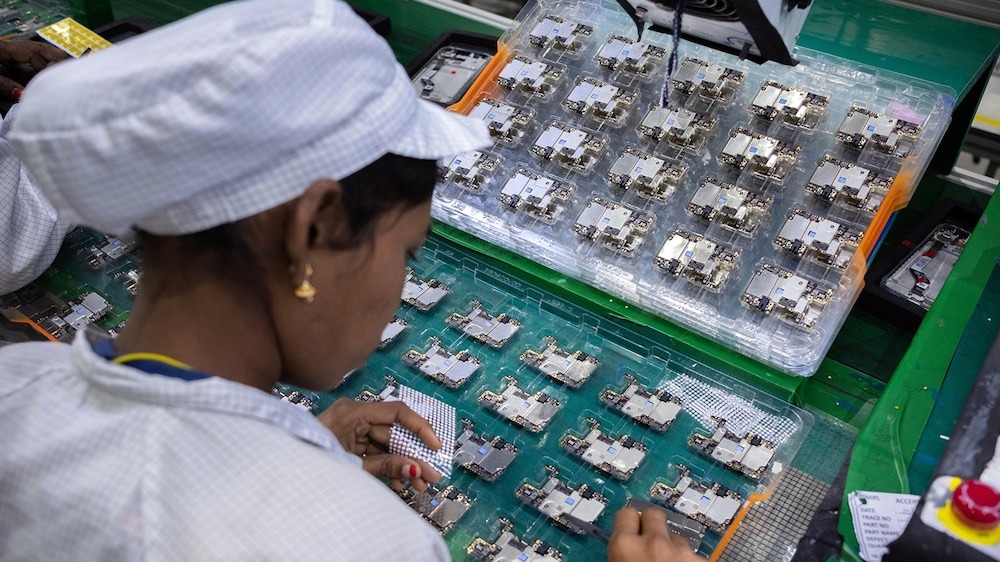In recent years, Apple has been steadily weaving India into its global manufacturing and market strategy. While U.S.-China tensions and Donald Trump’s aggressive tariff policies raised concerns for American tech giants, Apple’s India-centric shift may help it sidestep much of the impact. Despite potential tariffs and geopolitical pressure, the iPhone’s future in India looks increasingly resilient and even promising.

India: From Market to Manufacturing Hub:
Historically, Apple relied heavily on China for manufacturing. However, rising labor costs, supply chain vulnerabilities exposed during the COVID-19 pandemic, and rising political tensions with the U.S. have driven Apple to diversify. India emerged as a natural alternative. With its large, skilled labor force and government incentives under the Production Linked Incentive (PLI) scheme, India has become increasingly attractive.
Apple has ramped up local iPhone production, with manufacturing partners like Foxconn, Pegatron, and Wistron (now Tata Electronics) expanding operations in the country. As of 2024, Apple produces nearly 7% of its global iPhones in India a number projected to rise sharply in the coming years.

Trump’s Tariffs: An Old Threat in a New World:
During his presidency, Donald Trump imposed significant tariffs on Chinese imports, which included various electronics and smartphone components. These tariffs were aimed at reducing the U.S. trade deficit with China and encouraging companies to bring manufacturing back to America.
If Trump returns to power and reignites or escalates such tariffs, the impact on companies still reliant on China could be significant. However, Apple’s India strategy cushions it from this blow. By shifting production away from China, Apple reduces its exposure to such geopolitical risks. Manufacturing in India allows Apple to avoid both Chinese export duties and U.S. import tariffs, preserving profitability.
India as a Key Growth Market:
Beyond manufacturing, India represents one of Apple’s fastest-growing consumer markets. With rising disposable incomes, increasing smartphone penetration, and a growing appetite for premium products, India is becoming critical for Apple’s global growth.
The company has invested in expanding its retail presence, opening flagship Apple Stores in Mumbai and Delhi. These stores not only symbolize brand strength but also mark a strategic push to deepen customer engagement and loyalty.
Matured supply chain ecosystem:
India’s electronics supply chain has historically lagged behind that of China, but this is changing. Government incentives, along with Apple’s push, have catalyzed the growth of ancillary industries from component suppliers to logistics and service networks. As this ecosystem matures, India will become even more integral to Apple’s global operations.
A set trajectory:
Of course, India is not without challenges. Infrastructure limitations, bureaucratic red tape, and regulatory hurdles still exist. However, the direction is clear: Apple is committed to India, both as a manufacturing base and a consumer market.
Even if Donald Trump returns with a more protectionist trade policy, Apple’s growing footprint in India positions it well to weather the storm. In fact, the company might even gain a competitive edge over rivals more deeply entrenched in China.
Trump’s tariffs, though potentially disruptive on a global scale, are unlikely to derail Apple’s plans in India. The iPhone’s “desi” future appears to be not just intact but thriving. As Apple doubles down on India, it is not just hedging against geopolitical risk, but also betting on the country’s ascent as both a production powerhouse and a premium market.
Also Read: Gill Era Begins: India’s Test Squad Announced With Gill As The New Test Captain Of India!













